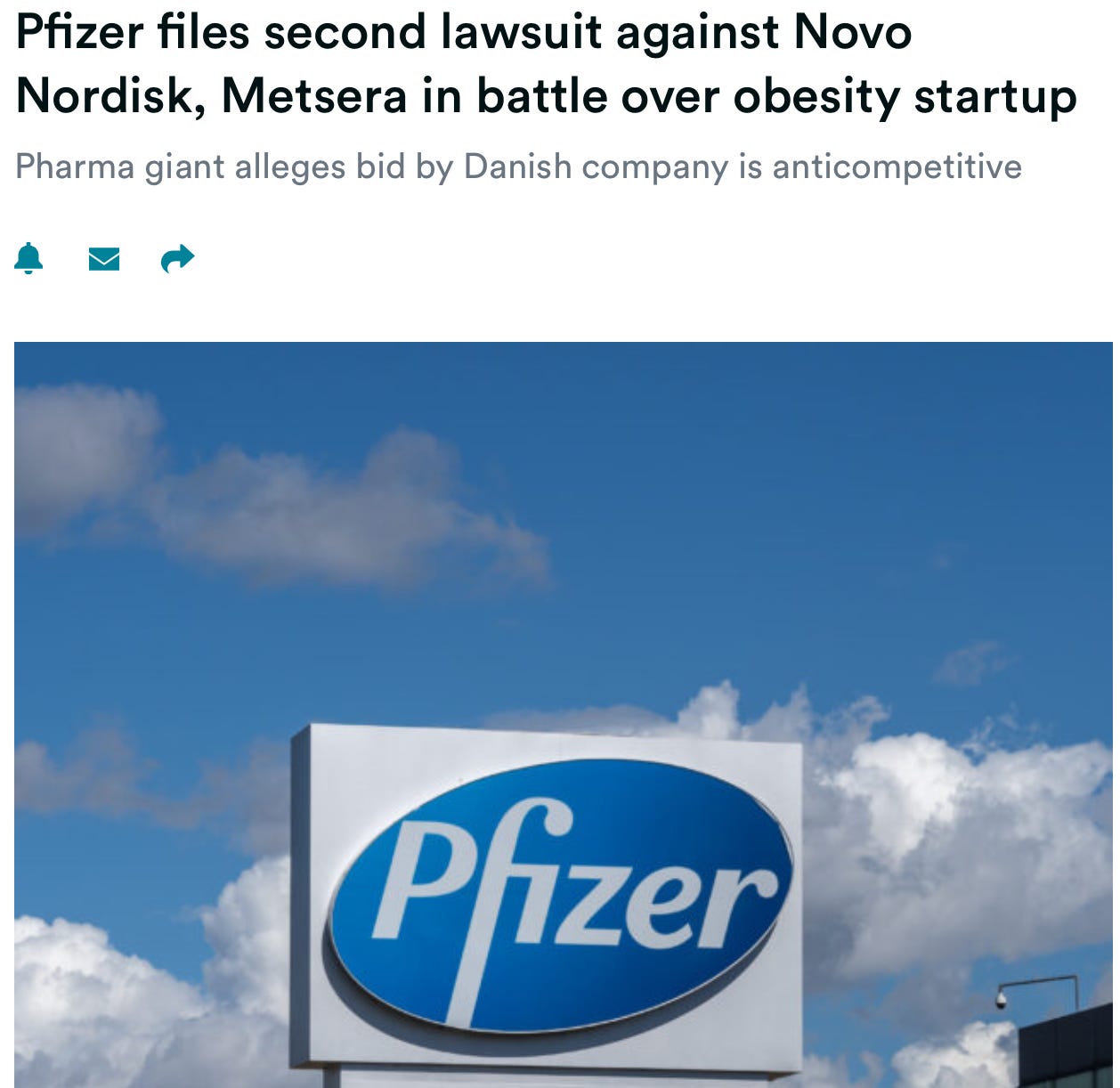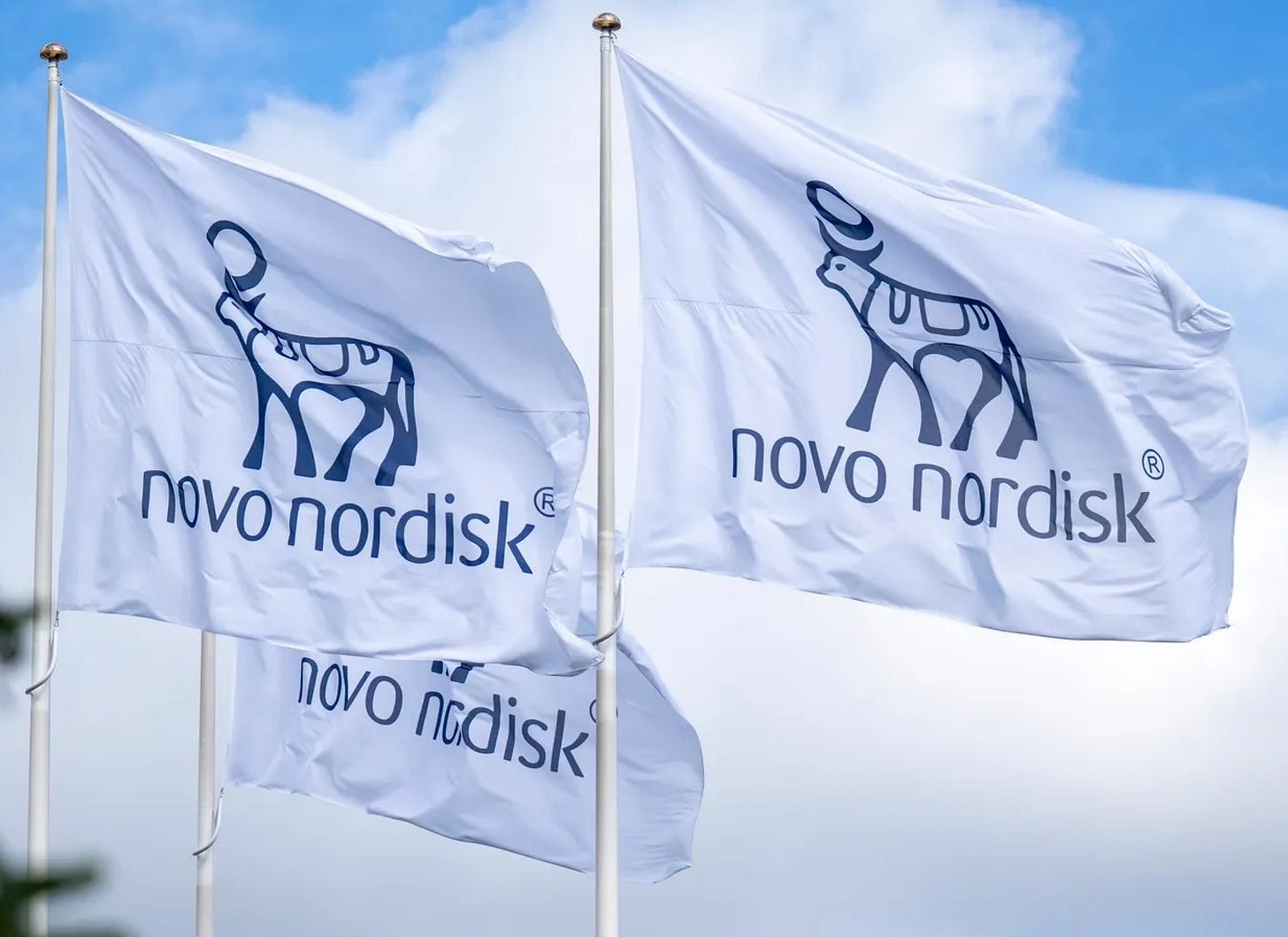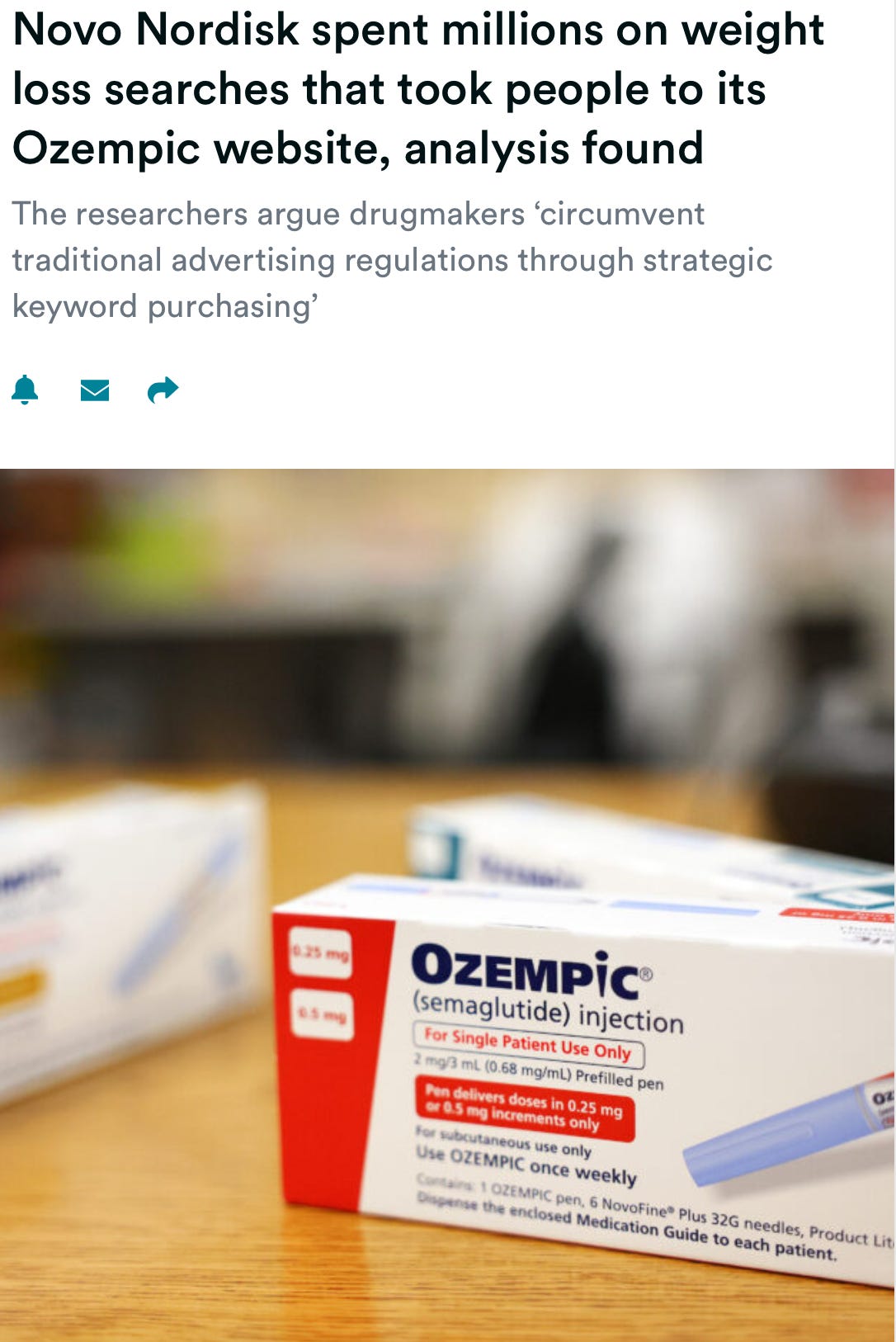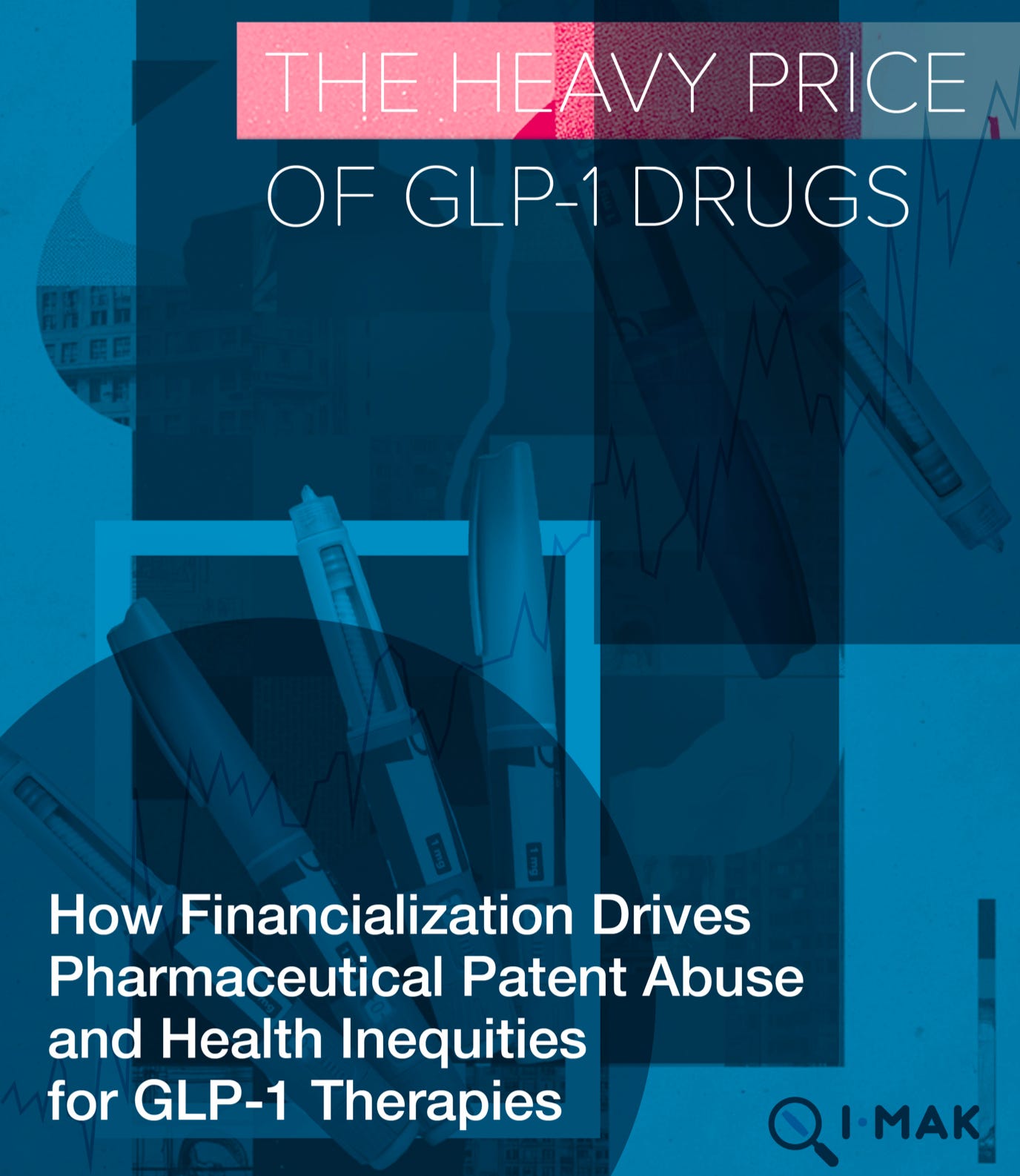Ugliness in the competitive GLP-1 drug market
Lawsuits, market share, pay-per-click advertising
A couple of recent stories by STAT News pull back the curtain on some of the behind-the-scenes shenanigans by drug companies competing over the seemingly boundless GLP-1 market.
Excerpts from this STAT story: :
The pharma giant alleges that Novo is trying to maintain its dominant position in the obesity market by eliminating Metsera, a potential competitor. It also alleges that Metsera’s controlling shareholders — organizations and funds under Population Health Partners and ARCH Venture Partners — conspired with Metsera and Novo…
(Novo Nordisk responded:) “Pfizer has taken the highly unusual and seemingly desperate approach in filing its antitrust lawsuit today” and that its claims are “false and without merit.” The obesity market is “intensively competitive” with at least a dozen other products in development, and Novo is confident that its bid doesn’t raise any antitrust issues.
Novo Nordisk cut 9,000 jobs in September. It was once the “undisputed leader” in the weight loss drug market, but has since been surpassed by Eli Lilly. Reuters reports that the company’s shares have lost around 45% of their value so far this year.
STAT News also reported:
Excerpts:
Over a recent two-year period, Novo Nordisk spent an estimated $7.5 million on more than 15,000 paid keywords related to weight loss searches and generated more than 2.4 million visits to Ozempic.com, even though the medicine is not approved to combat obesity, a new analysis found.
Notably, more than 3,500 keywords contained no mention of the medicine, which is approved to treat diabetes, including misspellings of the drug name. Meanwhile, nearly $500,000 was spent by the company on weight loss-related terms, such as “Ozempic for weight loss” and “Ozempic weight loss,” according to the analysis published in JAMA.
The researchers refer to this practice as pay-per-click advertising or PPC.
PPC advertising prioritizes company websites over other sources, an outcome that may not be apparent to users expecting search results to reflect informational relevance or objectivity. Manufacturers’ websites inevitably emphasize medications’ benefits, risks, and alternatives in ways designed to drive prescriptions.
Ozempic’s website has been promoted in response to a diverse set of search keywords that include other prescription drugs. PPC advertising may allow companies to promote their drugs for non–FDA-approved uses; for example, individuals searching weight keywords may be targeted with an Ozempic paid advertisement. While Ozempic has been shown to help them lose weight, it is not FDA approved for weight loss.
The battle for dominance in the GLP-1 market is a high-stakes dogfight. This recent report projected “continued explosive growth…to reach a staggering $470 billion in cumulative revenue by the end of 2030.”
Consumers should consider how conflicts between profits and public health can arise in this competitive minefield.








The pay-per-click data really shows how desperate the competiton has become. Novo's 45% stock decline this year reflects a fundam shift in the GLP-1 landscape. While they spent $7.5M on keyword targeting, Lilly's execution has been superior in bringing drugs to market.